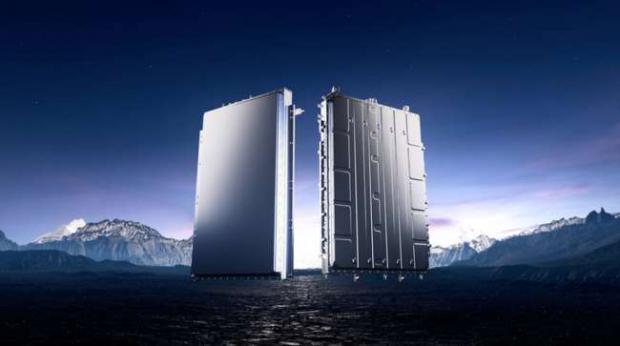
Breaking News
 Is Yen Carry Trade's unwind about to trigger a repo market meltdown? Let's dive into the mec
Is Yen Carry Trade's unwind about to trigger a repo market meltdown? Let's dive into the mec
 Chairman Rand Paul Releases New Report Revealing Hundreds of Billions...
Chairman Rand Paul Releases New Report Revealing Hundreds of Billions...
 Get Schiffty Music Video | Rick and Morty | Adult Swim
Get Schiffty Music Video | Rick and Morty | Adult Swim
Top Tech News
 This tiny dev board is packed with features for ambitious makers
This tiny dev board is packed with features for ambitious makers
 Scientists Discover Gel to Regrow Tooth Enamel
Scientists Discover Gel to Regrow Tooth Enamel
 Vitamin C and Dandelion Root Killing Cancer Cells -- as Former CDC Director Calls for COVID-19...
Vitamin C and Dandelion Root Killing Cancer Cells -- as Former CDC Director Calls for COVID-19...
 Galactic Brain: US firm plans space-based data centers, power grid to challenge China
Galactic Brain: US firm plans space-based data centers, power grid to challenge China
 A microbial cleanup for glyphosate just earned a patent. Here's why that matters
A microbial cleanup for glyphosate just earned a patent. Here's why that matters
 Japan Breaks Internet Speed Record with 5 Million Times Faster Data Transfer
Japan Breaks Internet Speed Record with 5 Million Times Faster Data Transfer
 Advanced Propulsion Resources Part 1 of 2
Advanced Propulsion Resources Part 1 of 2
 PulsarFusion a forward-thinking UK aerospace company, is pushing the boundaries of space travel...
PulsarFusion a forward-thinking UK aerospace company, is pushing the boundaries of space travel...
 Dinky little laser box throws big-screen entertainment from inches away
Dinky little laser box throws big-screen entertainment from inches away
 'World's first' sodium-ion flashlight shines bright even at -40 ºF
'World's first' sodium-ion flashlight shines bright even at -40 ºF
10-min super battery to power a new breed of long-range plug-in hybrid

The Freevoy Super Hybrid Battery debuts to give PHEVs and extended-range electrics (EREVs) the type of zero-emissions all-electric range that was previously reserved for battery electric vehicles. Freevoy-powered hybrids will travel farther with fewer fueling stops, whether they're relying solely on battery power or tapping into an ICE drive or generator. When battery power and fuel finally do run out, drivers can choose 10-minute battery charging, refueling or both.
CATL frames its newest battery as a solution to commonly cited PHEV and EREV shortcomings at a time when consumer interest in hybrid vehicles is increasing. More specifically, the Freevoy battery addresses issues with insufficient range, slow charging times and diminished performance in cold temperatures.
Leaping well past the single day's worth of all-electric commuting around which many plug-in hybrids are optimized, CATL aims the Freevoy at a full week's worth of single-charge battery-only commuting, slapping on a range estimate of 249 miles (400 km). The company has not released a Freevoy capacity to go along with that estimate, and any range will, of course, depend upon the vehicle in which it resides, as well as driving conditions and other factors.
The Freevoy isn't only a "super hybrid" because of the vehicles it's designed to power but also its chemistry. It takes advantage of CATL's AB architecture, combining sodium-ion and lithium-ion batteries into a single pack in a defined ratio. This improves cold-weather performance, extending low-temperature range by a claimed 5% and delivering a seamless driving experience down to -20 °C (-4 °F). Further, CATL says the battery achieves discharge capability down to -40 °C (-40 °F) and charging to -30 °C (-22 °F).
When it comes time to charge, the Freevoy battery benefits from CATL's 4C ultra-fast charging technology, sucking in 174 miles (280 km) worth of range in just 10 minutes. Fast lithium ion transfer is ensured by a fast ion conductor coating on the cathode, fast-charging graphite and novel nano-coating technologies for the anode, multi-gradient layered electrode design, and ultra-high conductivity electrolyte formulation.



